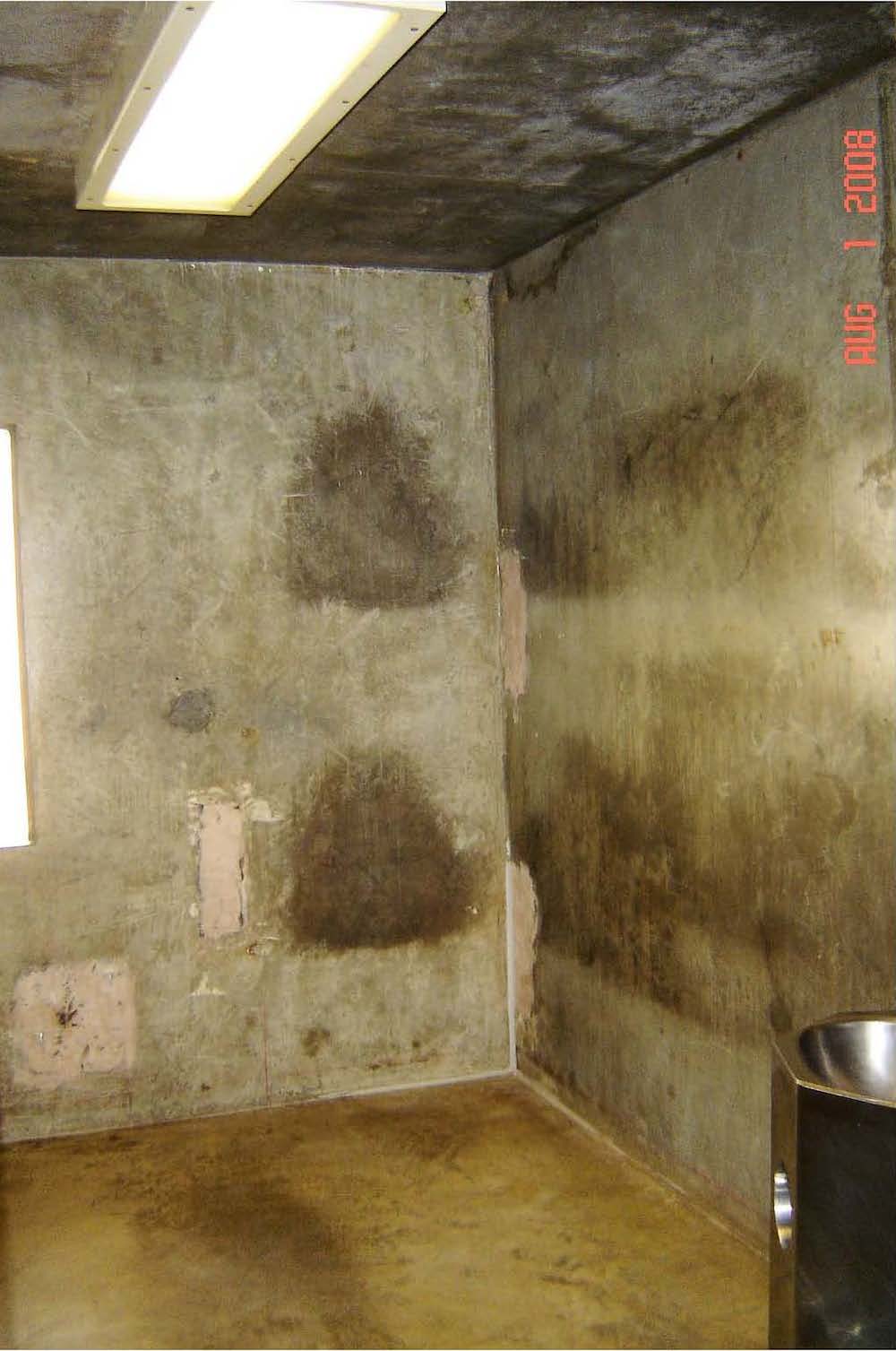“Brown v. Plata/Brown v. Coleman” takes the abstract information of a court case and turns it into a picture of human suffering. Both cases were class action lawsuits against the governor of California on how medical and mental health services in California prisons violated the Eighth Amendment, the Constitutional guarantor against cruel and unusual punishment. The exhibit is simply a collection of images and documents used in the case, but when placed altogether—side-by-side, stacked on top of each other—we get a sense of the claustrophobic and inhumane fact of being in an overcrowded prison. Whether in a holding cage or packed into bunkbeds three-high, such crowding is the opposite of the inhumanity of solitary confinement—no private space, no retreat, humans stacked on top of each other like the galley of a slave ship or a mass grave.
The ruling “transferred health care into the hands of federal receivership…[and] instructed that 32,000 prisoners should be moved from state prison to elsewhere.” Protesters derided Justice Kennedy (appointed by Ronald Reagan) who included three of these photos in the appendix of the ruling, claiming the photos were “too imprecise and emotional to have any place in a high profile legal case.” Such is the unsettling power of the photo. Such is the danger of writing with light.
